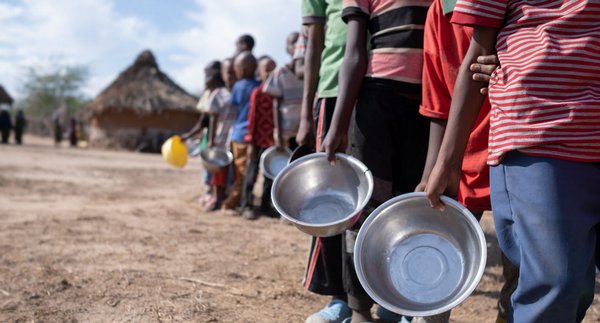 Read this article in French
Read this article in French- Share this article
- Subscribe to our newsletter
Acute food insecurity hits new highs
Around 193 million people in 53 countries or territories experienced acute food insecurity at crisis or worse levels (IPC/CH Phase 3-5) in 2021, according to the Global Report on Food Crises, released in May 2022 by the Global Network Against Food Crises (GNAFC). This represents an increase of nearly 40 million people compared with the already record numbers for 2020.
Of these, over half a million people (570 000) in Ethiopia, southern Madagascar, South Sudan and Yemen were classified in the most severe “Catastrophe” phase of acute food insecurity (IPC/CH Phase 5) and required urgent action to avert widespread collapse of livelihoods, starvation and death.
When looking at the same 39 countries or territories featured in all editions of the report, the number of people facing crisis or worse (IPC/CH Phase 3 or above) nearly doubled between 2016 and 2021, with unabated rises each year since 2018.
Conflict remains the main driver of food insecurity
These worrying trends are the result of multiple drivers feeding into one another, ranging from conflict to environmental and climate crises, from economic to health crises, with poverty and inequality as underlying causes.
The key drivers behind rising acute food insecurity in 2021 were:
- conflict (main driver pushing 139 million people in 24 countries/territories into acute food insecurity, up from around 99 million in 23 countries/territories in in 2020);
- weather extremes (over 23 million people in 8 countries/territories, up from 15.7 million in 15 countries/territories);
- economic shocks - (over 30 million people in 21 countries/territories, down from over 40 million people in 17 countries/territories in 2020 mainly due to the fallout from the COVID-19 pandemic).
Greater prioritisation of smallholder agriculture
The findings of the report demonstrate the need for a greater prioritisation of smallholder agriculture as a frontline humanitarian response, to overcome access constraints and as a solution for reverting negative long-term trends. Furthermore, promoting structural changes to the way external financing is distributed, so that humanitarian assistance can be reduced over time through longer-term development investments, can tackle the root causes of hunger. In parallel, we need to collectively promote more efficient and sustainable ways of providing humanitarian assistance, the authors state.
Likewise, strengthening a coordinated approach to ensure that humanitarian, development and peacekeeping activities are delivered in a holistic and coordinated manner, and ensuring and avoiding further fuelling conflict as an unintended consequence will also contribute to resilience building and recovery
(EU/FAO/WFP/ile)
Read more at WFP website





Add a comment
Be the First to Comment